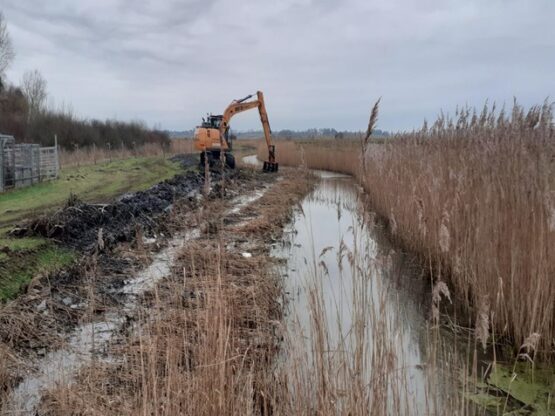Farming in Protected Landscapes Case Study:
Trimley Marshes Breeding Wader Project

An exciting project has taken place at Trimley Marshes Nature Reserve that will offer a range of benefits for wildlife, nature, and people.
Through the Farming in Protected Landscapes programme, the Suffolk & Essex Coast & Heaths National Landscape awarded £32,880 to restore floodplain grazing marsh at the site outside Felixstowe, which sits on the banks of the river Orwell and is managed by the Suffolk Wildlife Trust.
The project has restored and created new habitats which will help to increase populations of nationally important breeding waders such as redshank, lapwing, and avocet. The restored habitat will also help tackle climate change through carbon sequestration and storage.
Early in 2024, diggers were used to create 1km of new and restored footdrain habitat and 2km of restored dykes, as well as installing protective fencing, in time
for the nesting season.
This will provide optimum feeding habitat for waders and wildfowl on 39 hectares of the nature reserve. Wading birds love to feed on muddy edges alongside wet features such as foot drains and scrapes where they probe their long beaks into the soft mud to find food.
The project will also help to create two new islands for breeding waders and one reprofiled island where the birds will be safer from predators. Foot-drains are long, linear scrapes (typically up to 3m wide and 50cm deep) and are designed to hold surface water, acting as very important wet features.
Fencing installed in the dykes will protect against non-flying predators so that they cannot eat the eggs, chicks, and nesting birds. Birds such as curlew, lapwing, and snipe nest on the ground rather than in trees, so are very vulnerable to foxes and badgers.
Demonstration days will be held on the reserve where land managers will be shown the new fencing and educated about the benefits it will bring to breeding waders so that the work can be rolled out to other locations on the coast. The site is viewable by the public, making it a fascinating destination to watch these priority birds in their natural habitat.
